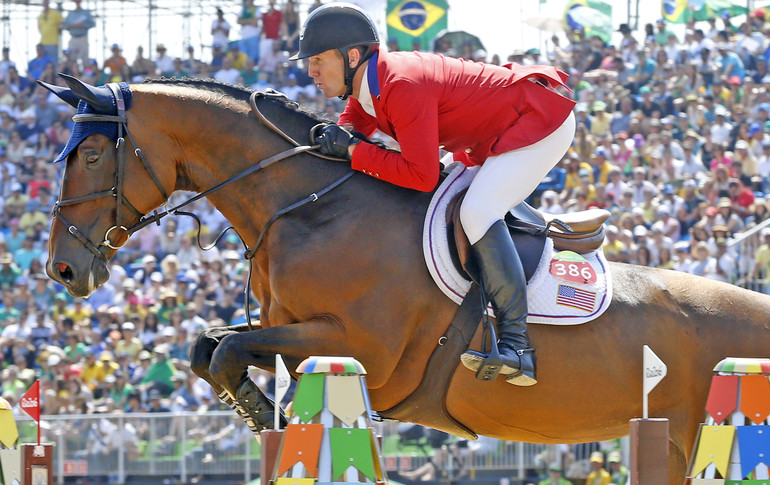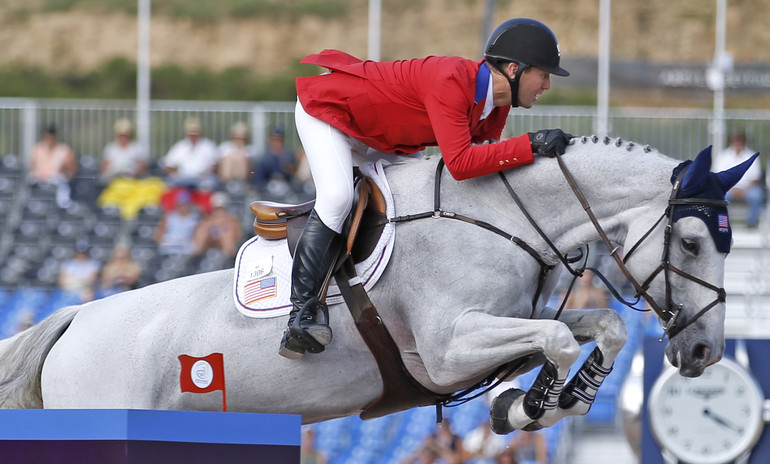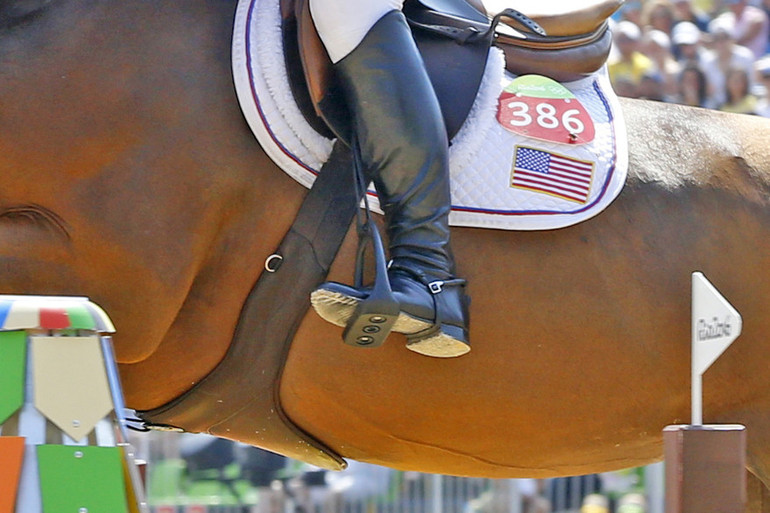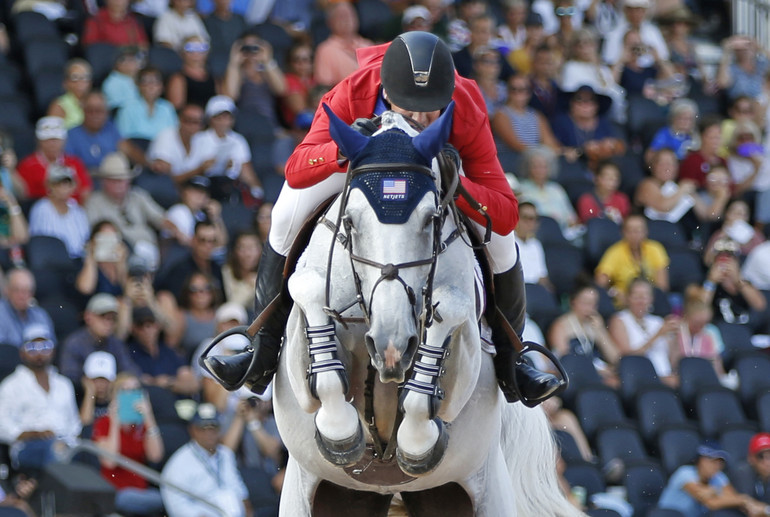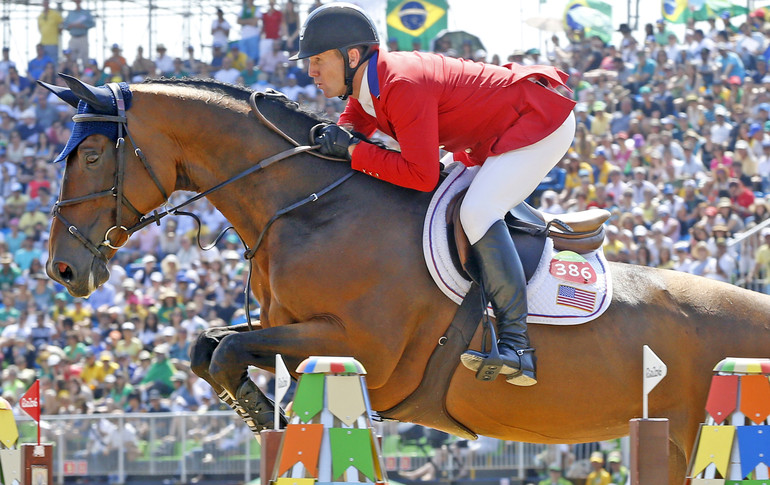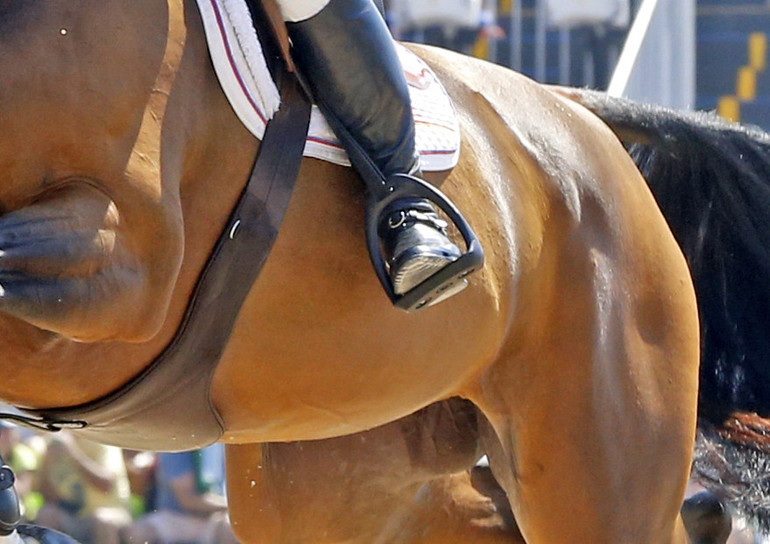McLain Ward is a leading American showjumper, currently ranked sixth in the world. His top string of horses includes Rapidash, a nine year old gelding owned by McLain; HH Azur, a 13 year old mare owned by Double H Farm and Francois Mathy; and Noche De Ronda, an impressive new ten year old mare owned by McLain, Marilla Van Beuren and Bob Russell, who was victorious with McLain in recent CSI4* CSI3* Speed Stakes classes. Another top ride, Contagious, a ten year old gelding owned by Beechwood Stables LLC, carried McLain to victory in the recent Nations Cup CSIO4* at the 2019 Winter Equestrian Festival, and also clinched victory at the recent Upperville Jumper Classic CSI4*.
With thirty years of professional showjumping under his belt, since his early successes as a teenage showjumper when he became the youngest rider to win the US Equestrian Team Show Jumping Talent Derby and USET Medal Finals, McLain Ward has inspired a legion of riders, with his balanced, precise riding style.
As a renowned ‘stickler’ for the correct showjumping position, we asked McLain Ward to share his tips for achieving a still and effective lower leg:
Your horse needs a connection with three things: your hands, via its mouth; your seat, and your lower leg, against its side. A strong lower leg is an effective leg, and keeps you stable in the saddle. Riders should think about connecting through their seat bones.
“Having a still lower leg helps your elasticity and security in the saddle…”
Having a correct and still lower leg is hugely important in keeping you in balance with your horse. It will help your elasticity and security in the saddle, and therefore help you communicate your aids more effectively. Having a secure lower leg also really helps you keep your hands independent of your seat. There should be a direct line with the rein from the horse’s mouth, to the rider’s hand; but the rider’s fingers and arms should be soft. The body should be strong, with each arm independent of the rider’s body.
A secure and still lower leg enables you to move your upper body without it influencing your leg, and unbalancing you. It’s also a safety mechanism, and acts as an anchor for when things go wrong, for example if you’re unseated. If your horse suddenly stops or spooks, and your upper bodyweight is thrown forwards, your secure lower leg should be able to stop you going any further. Whereas a weak or insecure lower leg will follow the tilt of the body, probably swing back, and you may end up falling off.
So, what defines a correct lower leg position? Each angle (ankle, knee and hip) has a purpose, and each one works in conjunction with one another.
Let’s start with the ankle. I ride with short stirrups, with my heel noticeably lower than my toe, as this acts as a shock absorber. I use Royal Rider Sport Flex stirrups. They’re lightweight, but highly resistant, with high structural integrity that’s vital when you’re contesting technical courses of showjumps. The flexibility of Royal Rider Sport Flex stirrups also offers shock absorption, which is useful when you’re riding multiple horses! Avoid using too much force to achieve this heel position, as this then stiffens the rider’s ankle joint, and reduces flexibility. It should come naturally!
By using a highly engineered pair of stirrups that work WITH your position and bodyweight, you can comfortably keep your heels down, which helps ‘lengthen’ your lower leg, and creates an increased contact area on your horse’s sides. It’s very easy to bring the heel up when trying to apply more leg pressure (eg. with a horse that isn’t sharp enough), but this actually makes your leg less effective, as it reduces the area of coverage. Also, by angling your toe in slightly, you will enable the whole inside of your calf to be in contact with your horse’s side; (remember the three key areas of connection; the rider’s hands via the horse’s mouth; the rider’s seat; and their lower leg, against the horse’s side.) Having more of the inside of your calf in contact with your horse’s side increases the contact area, and subsequently maximizes communication, and your security in the saddle.
The next angle is your knee. Knee angles are primarily a product of stirrup length. The shorter your stirrups, the more acute your knee angle. The angle should be enough to allow you to comfortably and securely hold a two point seat without unbalancing you, and letting you stay with your horse’s motion while jumping.
In my mind, you need shorter stirrups to keep your balance, and a low centre of gravity. Remember to keep your knees and thighs soft, as if you grip too hard with the knee, your lower leg will be compromised, and your balance will be harder to maintain. I actually do lots of work without stirrups, to strengthen the leg and seat muscles.
And finally, we have the rider’s hip angle. The angle of your hips depends a lot on what you're doing. If you are trying to engage your horse’s hindquarters or sitting deep to balance him for a jump, your angle will be more 'open', as you sit tall and upright.
When jumping and galloping, and in your two point seat, the angle is more acute or 'closed'. There should be very little movement from the rider’s upper body. A ‘snappy’ body leads to a snappy take off, and increases the chances of having a fence down. When the horse takes off at a fence, let the wither come up to meet you, rather than you ducking forward, to meet the wither. As the horse lifts his front legs on take off, his wither comes up towards you; if you’re standing slightly in the stirrups, with your ankles, hips and knees and flexing, the horse’s bascule helps the rider’s hip angle to close, as you fold in your jumping position.
All of these angles should complement one another, so that whether you're riding at jumping length, or at flatwork length for schooling, if you took the horse away and you dropped to the ground in the exact same position, you shouldn't fall over!
The Royal Rider Sport Flex stirrups are ideal for showjumping, as they have stainless steel cables in the body of the stirrup, which are covered in technical rubber, allowing flexibility; they have a nice wide, ergonomic arch. They help me achieve an optimum riding position, and allow me to balance as required for technical courses and jump offs. I do advocate riding with sufficiently short stirrups; they allow you to keep a light seat, and a secure lower leg.
About McLain Ward
McLain was part of the gold medal winning team at both the 2004 and 2008 Olympic Games, and a member of the silver medal winning team at the 2016 Games. He was an individual gold medallist at the 2015 Pan American Games, and was part of the gold medal winning team at the recent 2018 World Equestrian Games. He’s currently ranked sixth, in the FEI world rankings. Visit https://www.mclainward.com/ and https://www.facebook.com/mclain.ward
McLain Ward is sponsored by Garrity Smith’s L’Apogée Saddlery, who collaborate with Royal Rider Stirrups.



